Viteus vitifoliae (grapevine phylloxera)
Identity
- Preferred Scientific Name
- Viteus vitifoliae (Fitch)
- Preferred Common Name
- grapevine phylloxera
- Other Scientific Names
- Dactylosphaera vastatrix (Planchon)
- Dactylosphaera vitifoliae (Shimer)
- Daktulosphaira vitifoliae Fitch
- Daktylosphaera vitifoliae Fitch
- Pemphigus vitifoliae Fitch
- Peritymbia vastatrix Fitch
- Peritymbia vitifoliae (Planchon)
- Peritymbia vitisana Westwood
- Phylloxera pervastatrix Börner
- Phylloxera vastatrix (Planchon)
- Phylloxera vitifoliae (Fitch)
- Phylloxera vitifolii (Fitch)
- Rhizaphis vastatrix (Planchon)
- Viteus vastatrix (Planchon)
- International Common Names
- Englishgrape leaf lousegrape phylloxeraphylloxeravine louse
- Spanishfiloxera de la vid
- Frenchphylloxéra de la vignepuceron galligène de la vigne
- Portuguesefiloxera da videira
- Local Common Names
- Denmarkvindværglus
- Finlandviinikirva
- GermanyReblausWurzelreblaus
- Israelphylokserat hagefen
- Italyfilossera della vite
- Japanbudo-hirokisera
- Netherlandsdruifluis
- Norwayvinbladlus
- Turkeybag flokserasi
- EPPO code
- VITEVI (Viteus vitifoliae)
Pictures
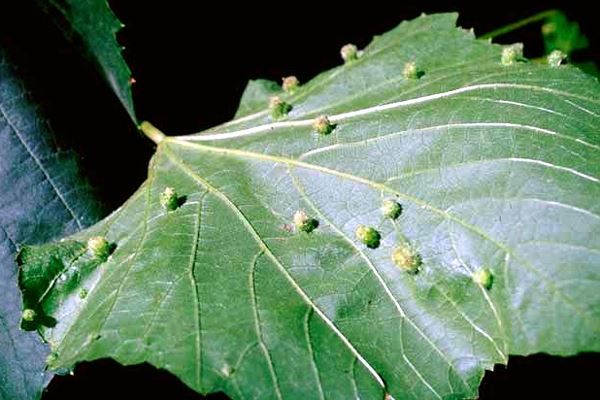
Leaf galls
Viteus vitifoliae (grapevine phylloxera); on the undersurface of a grape leaf.
©NOVARTIS Crop Protection AG, Basel Switzerland
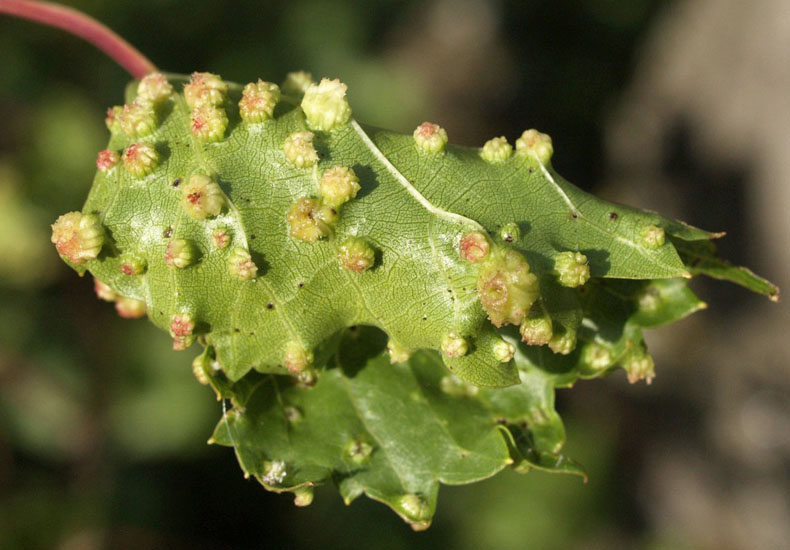
Leaf galls
Viteus vitifoliae (grapevine phylloxera); leaf galls on grape, caused by V. vitifoliae (Hemiptera: Sternorrhyncha: Phylloxeroidea).
©Ferran Turmo Gort/via flickr - CC BY-NC-SA 2.0
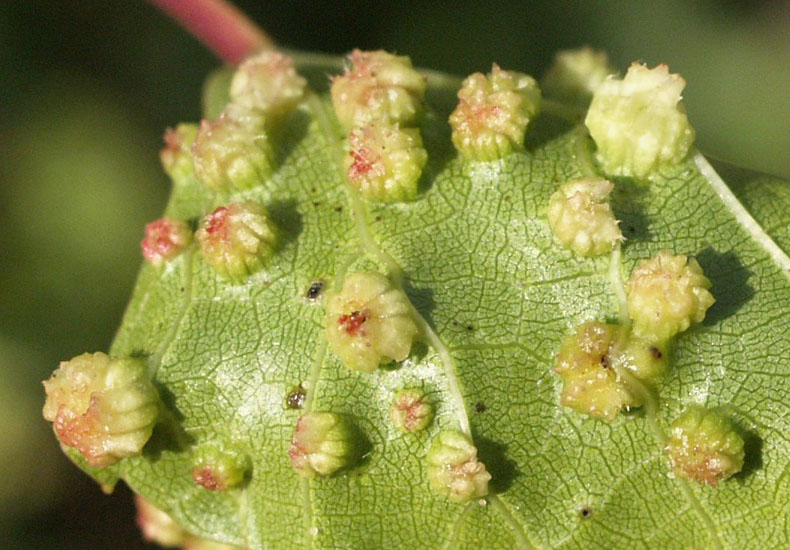
Leaf galls
Viteus vitifoliae (grapevine phylloxera); close-up of leaf galls on grape, caused by V. vitifoliae (Hemiptera: Sternorrhyncha: Phylloxeroidea).
©Ferran Turmo Gort/via flickr - CC BY-NC-SA 2.0
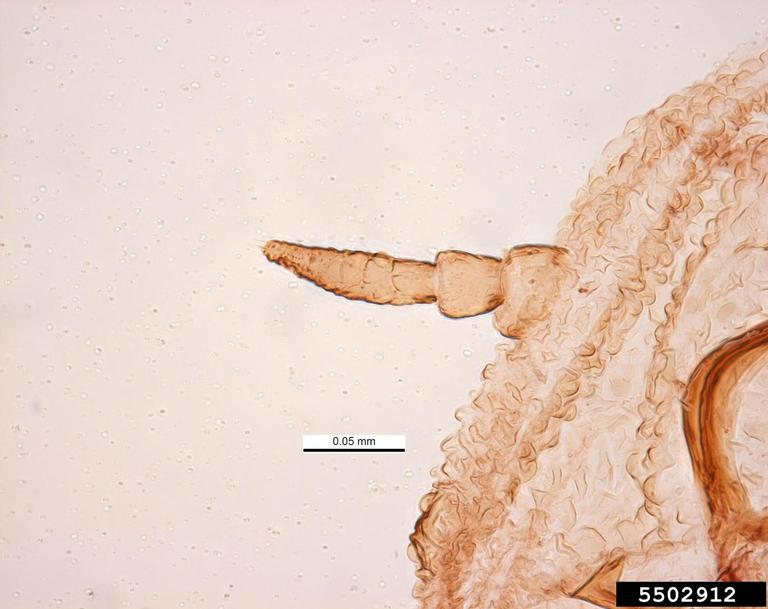
Viteus vitifoliae
Pest and Diseases Image Library, bugwood.org
Refer to Bugwood: http://www.bugwood.org/ImageUsage.html
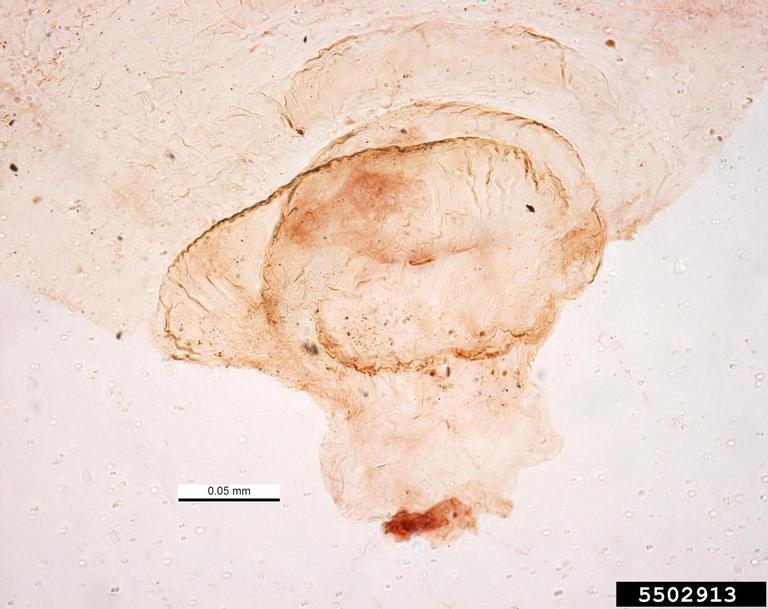
Viteus vitifoliae
Pest and Diseases Image Library, bugwood.org
Refer to Bugwood: http://www.bugwood.org/ImageUsage.html
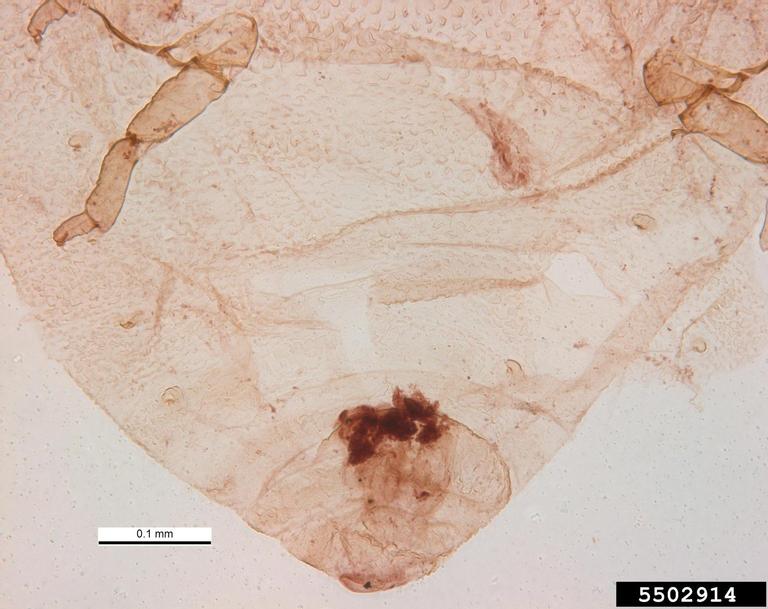
Viteus vitifoliae
Pest and Diseases Image Library, bugwood.org
Refer to Bugwood: http://www.bugwood.org/ImageUsage.html
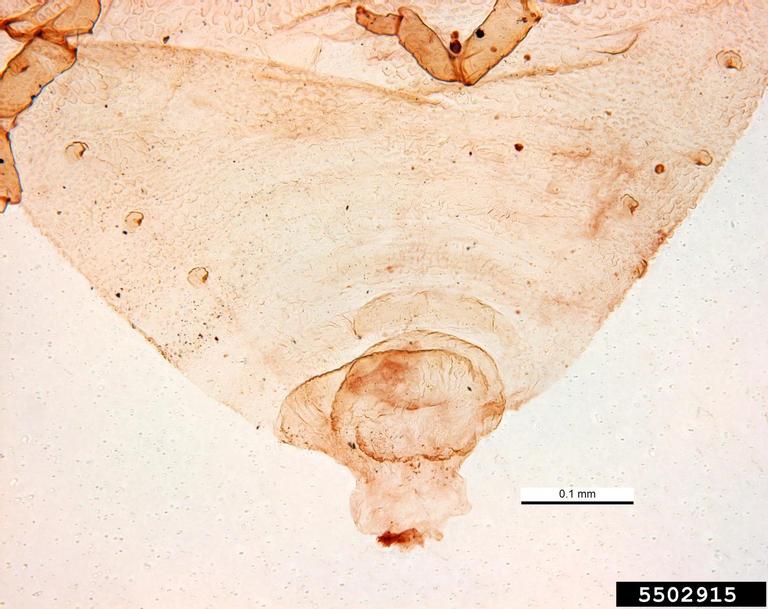
Viteus vitifoliae
Pest and Diseases Image Library, bugwood.org
Refer to Bugwood: http://www.bugwood.org/ImageUsage.html
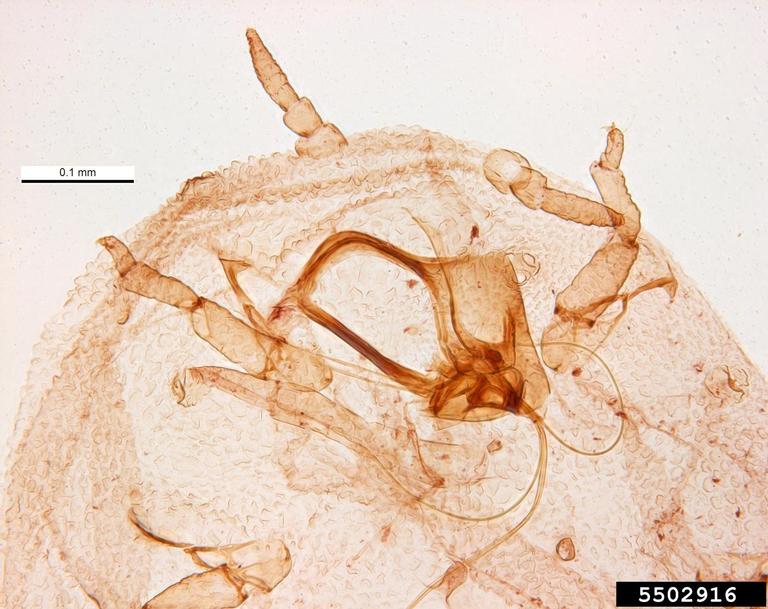
Viteus vitifoliae
Pest and Diseases Image Library, bugwood.org
Refer to Bugwood: http://www.bugwood.org/ImageUsage.html
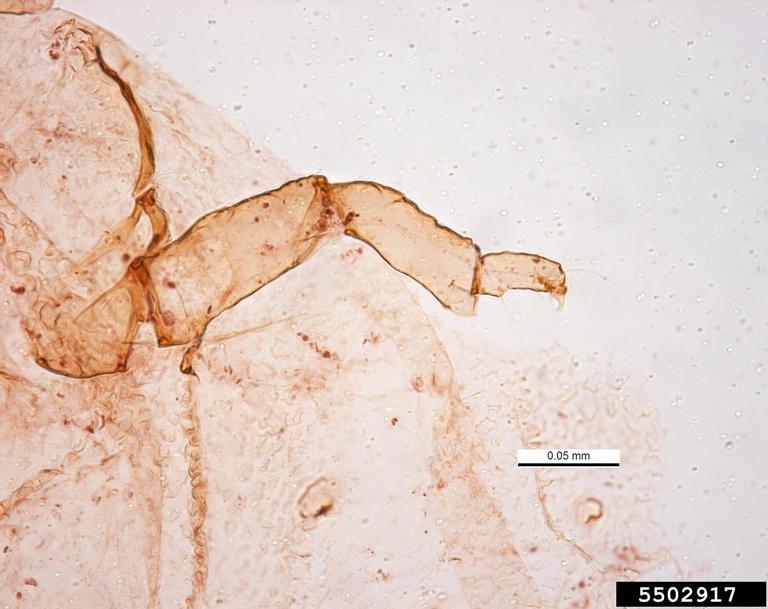
Viteus vitifoliae
Pest and Diseases Image Library, bugwood.org
Refer to Bugwood: http://www.bugwood.org/ImageUsage.html
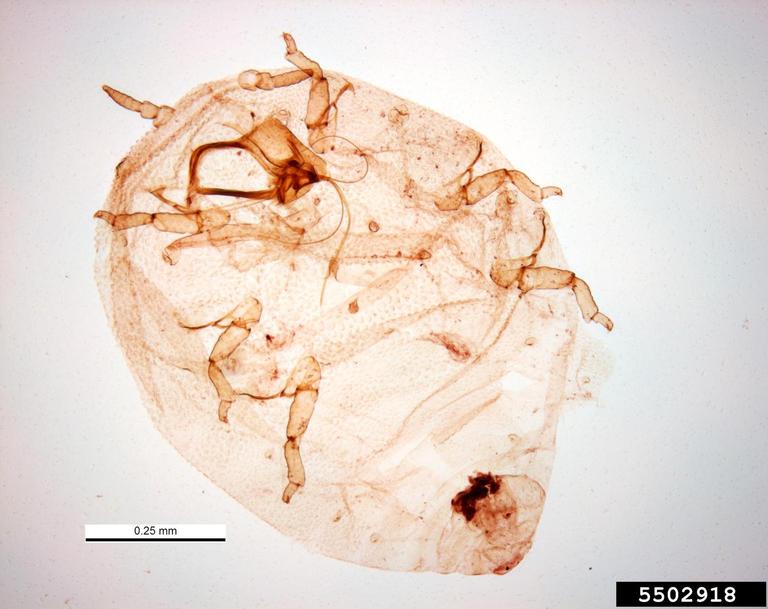
Viteus vitifoliae
Pest and Diseases Image Library, bugwood.org
Refer to Bugwood: http://www.bugwood.org/ImageUsage.html
Distribution
Host Plants and Other Plants Affected
| Host | Host status | References |
|---|---|---|
| Vitis (grape) | Other | |
| Vitis aestivalis (Summer grape) | Other | |
| Vitis labrusca (fox grape) | Other | |
| Vitis riparia (riverbank grape (USA)) | Other | Rahemi et al. (2015) |
| Vitis vinifera (grapevine) | Main | Umina et al. (2007) |
Symptoms
V. vitifoliae damage can appear initially as a few dead or declining contiguous vines in a vineyard.Gallicolae formSmall galls, about the size of half a pea, develop on the leaf surface, sometimes so numerous as to cover practically the entire leaf. The galls are open on the underside of the leaf. Although leaf galling by V. vitifoliae does not normally cause significant losses in grape production, severe infestations do cause considerable distortion and dropping of affected leaves late in the season.Radicicolae formNumerous knots or galls form on grapevine roots, with rotting of the roots, yellowing of the foliage and general decrease in vigour of the vines. Death of susceptible vines may result within 3-10 years.
List of Symptoms/Signs
| Symptom or sign | Life stages | Sign or diagnosis |
|---|---|---|
| Plants/Leaves/abnormal forms | ||
| Plants/Leaves/abnormal leaf fall | ||
| Plants/Roots/galls along length | ||
| Plants/Roots/reduced root system | ||
| Plants/Roots/swollen roots | ||
| Plants/Whole plant/plant dead; dieback |
Prevention and Control
Cultural Control
Flooding of vineyards for several weeks can help in reducing pest populations (Torregrosa et al., 1997) and was classically used in the past.
Host-Plant Resistance
Use of resistant rootstocks has been the main and most successful control measure for many decades. However, recent studies indicate that this practice might become less effective in future if new biotypes of V. vitifoliae develop (Williams and Shambaugh, 1988). In Italy, new biotypes have been reported to develop in several parts of the country, distinct from those which were originally introduced from the USA (Strapazzon and Girolami, 1985a). A combined German and New Zealand research project demonstrated differences in susceptibility of several rootstocks after inoculations with New Zealand and German populations of V. vitifoliae (King and Rilling, 1985), and in the USA research studies showed that certain populations of the pest overcame the resistance of even highly resistant cultivars (Granett et al., 1985). Naturalized rootstock species (e.g. V. riparia), escaped from cultivation, may support phylloxera populations of greater genetic diversity (Kocsis et al., 2002).
Flooding of vineyards for several weeks can help in reducing pest populations (Torregrosa et al., 1997) and was classically used in the past.
Host-Plant Resistance
Use of resistant rootstocks has been the main and most successful control measure for many decades. However, recent studies indicate that this practice might become less effective in future if new biotypes of V. vitifoliae develop (Williams and Shambaugh, 1988). In Italy, new biotypes have been reported to develop in several parts of the country, distinct from those which were originally introduced from the USA (Strapazzon and Girolami, 1985a). A combined German and New Zealand research project demonstrated differences in susceptibility of several rootstocks after inoculations with New Zealand and German populations of V. vitifoliae (King and Rilling, 1985), and in the USA research studies showed that certain populations of the pest overcame the resistance of even highly resistant cultivars (Granett et al., 1985). Naturalized rootstock species (e.g. V. riparia), escaped from cultivation, may support phylloxera populations of greater genetic diversity (Kocsis et al., 2002).
Chemical Control
Due to the variable regulations around (de-)registration of pesticides, we are for the moment not including any specific chemical control recommendations. For further information, we recommend you visit the following resources:
•
EU pesticides database (http://ec.europa.eu/food/plant/pesticides/eu-pesticides-database/)
•
PAN pesticide database (www.pesticideinfo.org)
•
Your national pesticide guide
Impact
V. vitifoliae is the most destructive pest of grapevines known in Europe and the western USA and has become an important pest of wine grapes in Pennsylvania. Within 25 years of its introduction into France from America (in about 1860) it had destroyed nearly one-third of the vineyards in the country - more than 100,000,000 ha - with incalculable economic and social consequences. This was because the European grapevine cultivars then grown were highly susceptible. The solution found was to replant with European cultivars grafted onto American rootstocks, a practice which is now almost universal wherever V. vitifoliae occurs. The pest still represents a serious threat to the few regions where susceptible grape cultivars are still cultivated on their own roots (rather than on resistant rootstocks). It is also more damaging in recently planted vineyards, and damage is less significant on vigorous vines over 10 years old. Leaf infestation is reported to have no economic effect on wine grapes, or on the quality and quantity of wine made from them (Strapazzon and Girolami, 1985b; Strapazzon et al., 1986). In California in the early 1980s, large populations of V. vitifoliae were detected in grapevines grafted on 'AxR#1' (a hybrid between V. vinifera and V. rupestris). The existence of a different biotype (biotype B), having a greater parasitic ability on this rootstock, was demonstrated (Granett et al., 1985). These susceptible vineyards had to be uprooted, fumigated and replanted at a cost of over US$500 million (Chiarappa and Buddenhagen, 1994). In general, rootstocks with no vinifera parentage have retained their resistance remarkably, for over 120 years (Grannet et al., 2001a). Problems are more likely on rootstocks like AXR#1, with vinifera, parentage, which are now best avoided. For more information, see Balachowsky and Mesnil (1935), Dominguez Garcia-Tejero (1957) and Rilling (1964).
Information & Authors
Information
Published In
Copyright
Copyright © CABI. CABI is a registered EU trademark. This article is published under a Attribution-NonCommercial-NoDerivatives 4.0 International (CC BY-NC-ND 4.0)
History
Published online: 16 November 2021
Language
English
Authors
Metrics & Citations
Metrics
SCITE_
Citations
Export citation
Select the format you want to export the citations of this publication.
EXPORT CITATIONSExport Citation
View Options
View options
Get Access
Login Options
Check if you access through your login credentials or your institution to get full access on this article.


